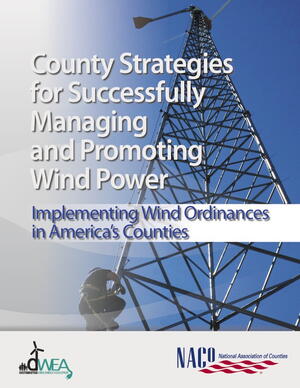
People have been generating electricity from wind energy for centuries. Yet, until recently, wind power has not been efficient or consistent enough to become a dominant power source. Today, more advanced technology and global circumstances are making wind power more competitive with other power supply options. As a result, many people across the country are becoming interested in installing their own small wind systems and accessing renewable energy from utility-scale wind farms for their businesses and residences.
Without question, supplying energy to a high-tech nation requires coordination among the private sector and all levels of government—federal, state, and local. Local governments, who are responsible for protecting the health, safety, and property rights of their community residents and businesses, play a crucial role in the implementation of wind power across the United States.
Local governments use zoning, building permitting, and public safety regulations to protect their community residents and businesses. These decisions have direct impacts on the cost, efficiency, and eventual success of wind energy projects. Local government decisions to delay or increase compliance requirements for wind energy projects can interfere with community demand for wind power and raise project costs. As a result, many county leaders interested in fostering wind power in their communities are thoughtfully considering how to protect community residents and businesses, while at the same time promoting wind power and reducing implementation costs.
In order to successfully regulate wind power, it is essential for local leaders to understand the different types of wind power technologies and the various ways in which the technologies can be regulated. The most significant difference in wind power technology exists between small-scale, distributed wind turbines designed for on-site energy generation; and large, utility-scale turbines designed for wind farms and generating energy to supply the power grid. There are many other differences in wind technology. Yet, scale is one that has the most significance to local leaders regulating wind energy.
Utility-scale and distributed wind energy have very different regulation requirements. Over the past several decades, much more attention has been given to utility-scale regulations. This is largely due to technology differences. Until recently, distributed wind did not make sense for many communities. Today, many more people are interested in installing wind energy.
Many counties have not yet included small wind systems in their zoning codes to allow their use. The permitting process can be the single most daunting obstacle for would-be consumers and wind developers. In some places, unfamiliarity with wind technology has kept county leaders from addressing wind development. And, in some places, unfamiliarity has resulted in a complete restriction of wind development to avoid setting a controversial precedent. Making the permitting process affordable, streamlined, and accountable is in the best interest of consumers, potential energy providers, the environment, and the community.
